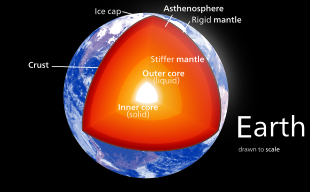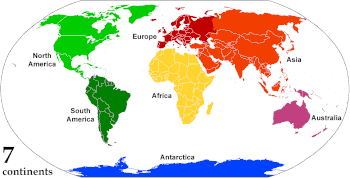
Геология (от др.-греч. γῆ ( gê ) 'земля' и λoγία ( -logía ) 'изучение, рассуждение') — раздел естественных наук , изучающий Землю и другие астрономические объекты , породы, из которых они состоят, и процессы, посредством которых они изменяются с течением времени. Современная геология в значительной степени пересекается со всеми другими науками о Земле , включая гидрологию . Она интегрирована с наукой о системе Земли и планетологией .
Геология описывает структуру Земли на ее поверхности и под ней, а также процессы, которые сформировали эту структуру. Геологи изучают минералогический состав горных пород, чтобы получить представление об истории их формирования. Геология определяет относительный возраст горных пород, обнаруженных в данном месте; геохимия (раздел геологии) определяет их абсолютный возраст . Объединяя различные петрологические, кристаллографические и палеонтологические инструменты, геологи способны вести хронику геологической истории Земли в целом. Одним из аспектов является демонстрация возраста Земли . Геология предоставляет доказательства тектоники плит , эволюционной истории жизни и прошлых климатов Земли .
Геологи широко изучают свойства и процессы Земли и других планет земной группы. Геологи используют широкий спектр методов для понимания структуры и эволюции Земли, включая полевые работы , описание горных пород , геофизические методы , химический анализ , физические эксперименты и численное моделирование . С практической точки зрения геология важна для разведки и эксплуатации полезных ископаемых и углеводородов , оценки водных ресурсов , понимания стихийных бедствий , устранения экологических проблем и предоставления информации о прошлых изменениях климата . Геология является основной академической дисциплиной , и она является центральной для геологической инженерии и играет важную роль в геотехнической инженерии . ( Полная статья... )




.jpg/440px-Kathryn_Sullivan,_PCAST_Member_(cropped).jpg)








Более подробную информацию по этой теме можно найти в следующих родственных проектах Фонда Викимедиа :